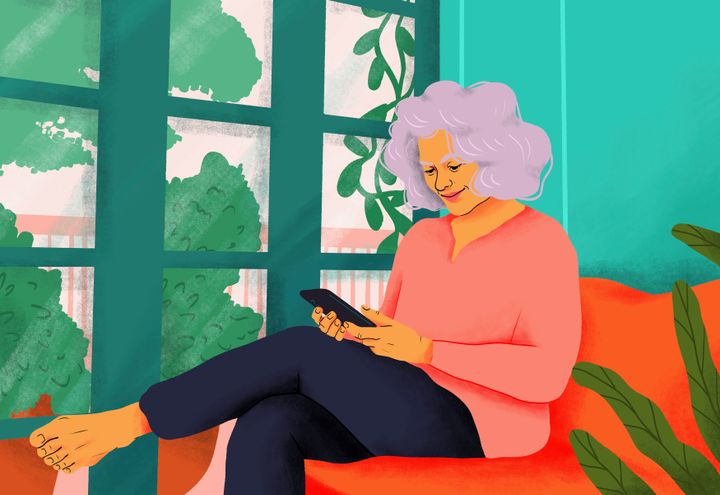Ask any little kid who’s playing the grandparent in a school play — high and scratchy is the way to go to pull off a perfect “old person” voice. And while we all understand that what’s being depicted is a caricature, we might be unaware of how similar changes are gradually being more evident in our own voices. If you’ve noticed that your voice has been growing unsteady, weaker or breathier, you may be experiencing symptoms of presbyphonia, a term that refers to the changes of the aging voice.
These changes happen to about 1 in 5 of us as we age, according to Lisa Vinney, a speech-language pathologist and faculty member at the University of Wisconsin-Madison. “Age-related voice changes happen to everyone to some degree,” she said. “But those changes can occur more rapidly or be more pronounced thanks to genetic, lifestyle and health factors.”
Presbyphonia can start as early as your 50s, but grows in prevalence as people age, said otolaryngologist Dr. Dehra McGuire, known as “voicedocok” on Instagram. “Most of the patients I see are around retirement age or older,” she said.
Why does this happen?
Dr. Robert T. Sataloff is a medical doctor, professor and chair of the department of otolaryngology at Drexel University College of Medicine. He cited a number of factors that may be contributing to a weaker voice as we age. “Our vocal folds lose muscle mass because of hormonal, neurological, metabolic and environmental influences,” he said. “As the muscles atrophy and become less bulky, the vocal folds don’t close as firmly, so the voice becomes weak and breathy.”
“There also are changes in the thickness of the surface layer of the vocal folds, the number of nerve fibers, the strength and efficiency of the respiratory system and related abdominal and chest muscles that form the power source of the voice, alterations in tissues above the vocal folds in the larynx, throat mouth tongue and elsewhere, changes in facial bone structure, and other alterations that combine to affect the sound of the voice,” he added.
In addition to the natural changes from aging, illnesses can contribute to voice issues, he said, citing things like reflux of stomach acid, respiratory disorders and autoimmune diseases. “Obesity also affects the voice adversely and may make changes associated with aging more prominent,” Sataloff said.
Another factor in an aging voice is hormonal changes, which can change high voices to lower ones, and lower ones to a higher pitch. Vinney explained it this way: “Estrogen decreases relative to progesterone in women during menopause, potentially resulting in thicker vocal cords and a lower vocal pitch. For men, whose testosterone levels start to drop around age 50, vocal folds start thinning and their pitch can become higher.”
Vinney noted other factors, including medications that can be dehydrating and can affect vocal cords, which “vibrate more smoothly when they’re well-lubricated,” she said.
Why does it matter?
We make judgments about others all the time, and someone’s voice certainly plays into perceptions about another person’s credibility, experts said. “Listeners often interpret instability and weakness in the voice as indicative of weakness or diminished credibility in the speaker,” Sataloff said. But a weak voice is not necessarily the same thing as a weak mind. “Voice changes occur commonly with no associated changes in cognitive abilities. Yet they can result in people failing to give adequate credence to the wise, experienced insights of elderly speakers.”
“Voice problems in the elderly have significant quality-of-life impacts,” said Dr. Amanda I. Gillespie, associate professor at Emory University School of Medicine, director of speech pathology and co-director of the Emory Voice Center. “Social isolation from difficulty communicating can be very devastating, and data show that social integration is a predictor of longevity. Voice problems and reduced communication increase the risk for mental and physical health problems.”
Amr Bo Shanab via Getty Images
McGuire said, “People are often bothered when they feel like they don’t sound like themselves anymore, which can cause feelings of distress and anxiety.” If you can speak clearly and strongly, she said, you can do things like talk on the phone or call for help. If you can’t, your life can become smaller. “I see some patients who just stop going out with their friends because they can’t be heard in a loud environment, and they get so frustrated trying to repeat themselves,” McGuire said.
Here’s how to keep your voice strong.
Muscle strength is key for healthy aging, and Sataloff noted that much of our voice system is musculoskeletal. This means that the stronger your body is, the stronger your voice will probably be. “In order to keep the voice healthy, we need to maintain good aerobic conditioning so that the power source of the voice stays strong,” he said.
McGuire agreed, noting that “Your voice is one of those ‘use it or lose it’ things you experience as you age.” Give it some practice every day, she said. “I tell some of my more introverted patients, or patients who live alone, to sing along with their favorite songs during the day if they listen to music, just to keep their throat muscles active. I also always emphasize laryngeal hygiene, things like drinking enough water and managing reflux and post-nasal drainage.”
“Staying vocally active has tremendous health benefits,” Gillespie said. “Read to your grandkids out loud, sing in a choir or finally start that garage band.”
These are some possible interventions.
If your voice has become enough of a problem that you’re ready to speak to a health care provider, consider what you want to know and find out before moving forward. “I think the most important thing for a patient is to know what their goals are for the appointment,” McGuire said. “Some people are happy enough to know their hoarseness isn’t anything bad, scary or dangerous, while others are very motivated to make their voice better. Ask yourself, ‘How much improvement would I be happy with?’”
Vinney said it’s important to rule out other serious conditions that might be affecting the voice. “It’s imperative that anyone who has concerns about voice changes related to aging has their larynx visualized, ideally with stroboscopy, which is a light source that allows for visualization of vocal fold vibration. There are several other conditions that can affect the larynx and vocal folds, so the only way to rule those out is to visualize them.”
After testing and consultation, one good first step might be working with a voice-specialized speech-language pathologist. Gillespie, whose lab has researched voice therapy for the aging voice, said results can be relatively quick. “Therapy involves working together on a weekly or biweekly basis and practicing at home between sessions. People typically see results in four to six weeks,” she said.
McGuire outlined some available medical interventions: “We do have several ways to ‘plump up’ the vocal folds with temporary filler for an in-office procedure. That doesn’t change vocal cord anatomy itself, but placing filler next to vocal cords to help correct the bowed shape of the cords and help them contact better. There are also more permanent implant options, done in the operating room, that can be explored.”


